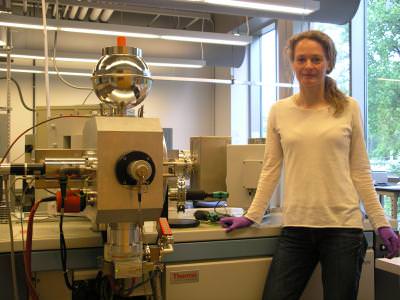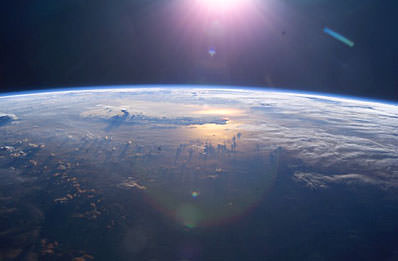[/caption]
Researchers have been able to determine the atmospheric carbon dioxide levels over the past 2.1 million years in the sharpest detail yet by analyzing the shells of single–celled plankton. Their findings shed new light on CO2’s role in the earth’s cycles of cooling and warming, confirming many researchers’ suspicions that higher carbon dioxide levels coincided with warmer intervals during the study period. But it also rules out a drop in CO2 as the cause for earth’s ice ages growing longer and more intense some 850,000 years ago.
The study, published in the June 19 issue of the journal Science shows that peak CO2 levels over the last 2.1 million years averaged only 280 parts per million; but today, CO2 is at 385 parts per million, or 38% higher. This finding means that researchers will need to look back further in time for an analog to modern day climate change.

In the study, Bärbel Hönisch, a geochemist at Lamont-Doherty Earth Observatory, and her colleagues reconstructed CO2 levels by analyzing the shells of single-celled plankton buried under the Atlantic Ocean, off the coast of Africa. By dating the shells and measuring their ratio of boron isotopes, they were able to estimate how much CO2 was in the air when the plankton were alive. This method allowed them to see further back than the precision records preserved in cores of polar ice, which go back only 800,000 years.
Around 850,000 years ago, the climate cycles on Earth switched from being dominated by 40,000 year cycles, to the stronger 100,000 year cycles of the more recent times. The time period from 800 – 1,000 kyr ago is called the mid-Pleistocene transition, and since the rhythms of the Earth’s orbit didn’t change, some scientists have attributed that shift to falling CO2 levels. But the study found that CO2 was flat during this transition and unlikely to have triggered the change.
“Previous studies indicated that CO2 did not change much over the past 20 million years, but the resolution wasn’t high enough to be definitive,” said Hönisch. “This study tells us that CO2 was not the main trigger, though our data continues to suggest that greenhouse gases and global climate are intimately linked.”
The timing of the ice ages is believed to be controlled mainly by the earth’s orbit and tilt, which determines how much sunlight falls on each hemisphere. Two million years ago, the earth underwent an ice age every 41,000 years. But some time around 850,000 years ago, the cycle grew to 100,000 years, and ice sheets reached greater extents than they had in several million years—a change too great to be explained by orbital variation alone.

A global drawdown in CO2 is just one theory proposed for the transition. A second theory suggests that advancing glaciers in North America stripped away soil in Canada, causing thicker, longer lasting ice to build up on the remaining bedrock. A third theory challenges how the cycles are counted, and questions whether a transition happened at all.
The low carbon dioxide levels outlined by the study through the last 2.1 million years make modern day levels, caused by industrialization, seem even more anomalous, says Richard Alley, a glaciologist at Pennsylvania State University, who was not involved in the research.
“We know from looking at much older climate records that large and rapid increase in C02 in the past, (about 55 million years ago) caused large extinction in bottom-dwelling ocean creatures, and dissolved a lot of shells as the ocean became acidic,” he said. “We’re heading in that direction now.”
The idea to approximate past carbon dioxide levels using boron, an element released by erupting volcanoes and used in household soap, was pioneered over the last decade by the paper’s coauthor Gary Hemming, a researcher at Lamont-Doherty and Queens College. The study’s other authors are Jerry McManus, also at Lamont; David Archer at the University of Chicago; and Mark Siddall, at the University of Bristol, UK.
Source: EurekAlert


Ask any Geologist, 2.1 million years is a very short amount of time. They will also tell you that 500 million years ago CO2 levels were 10 times what they are today and it didn’t keep earth from entering an ice age. I assume everone that reads this article would understand that 55 million years ago early mammals were not creating CO2 by Fossil Fuel consumption. CO2 is a very small factor in climate change.
“2.1 million years is a very short amount of time.”
But that is the point, isn’t it? 500 Ma, Gondwanaland and 5 % less solar irradiation made for very different conditions. 3.5 Ga, AFAIU an evolved atmosphere of 10-60 bar of CO2 balanced by ~ 30 % less solar irradiation made for sea temperatures starting out at ~ 70 Celsius on average, while perhaps later still had parameter room for large excursions such as ice ages (as evidently tillites tries to tell us). So what?
Today CO2 is a rather small driver of climate. Never the less the data has convinced the climatologists the _change_ in CO2 is the largest factor in current climate change.